Strolling down a tiny street in Venice’s San Marco district, a couple pauses in front of a hand-crafted leather goods stall, one of hundreds of “authentically Venetian” shops lining the cobblestone streets of the city’s tourist thoroughfares. Holding hands, they stop to embrace in front of the famed Grand Canal.
“Watch out where you’re going!” a hurried passerby barks at the couple, who are oblivious to the oncoming foot traffic. “This is Europe, walk on the right side!”
It’s a scene frequently replayed across the city, and one that’s now almost as famous as Venice’s medieval piazzas, its architecture and artworks and its winding waterways echoing to the songs of gondoliers.
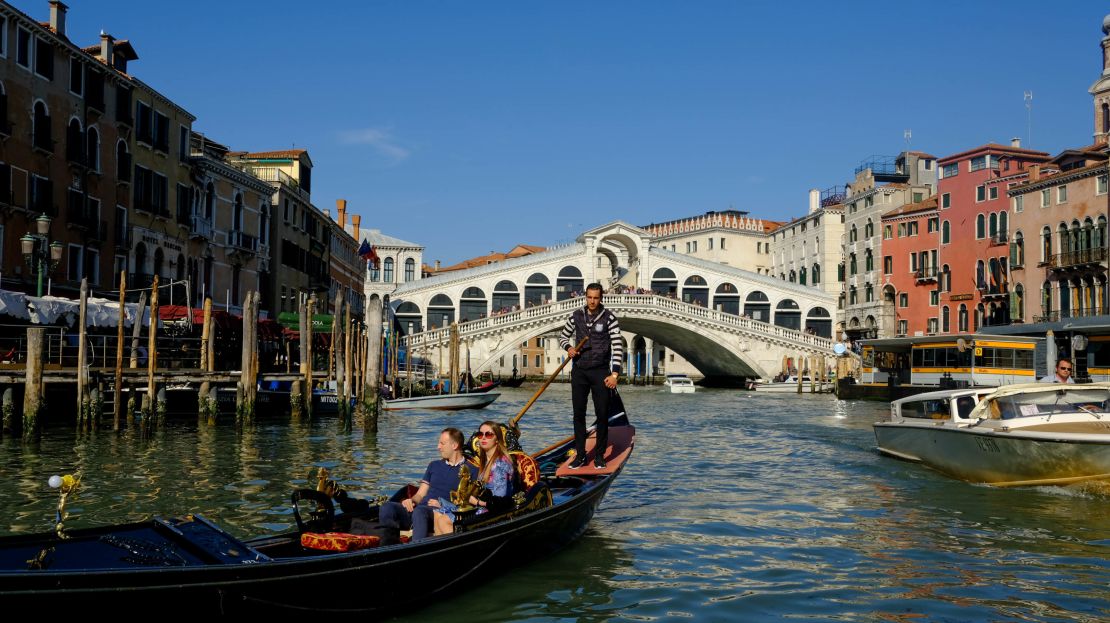
Venice received more than 36 million international tourists in 2017, a near 10% rise on the previous year. While travelers fuel the city’s economy, they’re also the primary contributors to Venice’s biggest problem: overcrowding.
From April to October, an estimated 32,000 cruise ship passengers disembark here daily, according to the Port Authority. In August, an additional 465,100 day-trippers make their way to the city, adding to the chaos of an additional 2.2 million tourists who will stay overnight, according to recent National Tourism Agency figures.
Many Venetians believe that everyone should have a chance to experience the beauty of their city, but say that a constant swell of tourists is ruining the experience for everyone.
Cruise ships have caused significant environmental damage to the city’s waterways and lagoons – sometimes colliding with other vessels.
Short visits put a strain on the city’s overstretched infrastructure, and cheap Airbnb rentals have driven up the cost of accommodation and living conditions for locals, some of whom have decided to leave altogether.
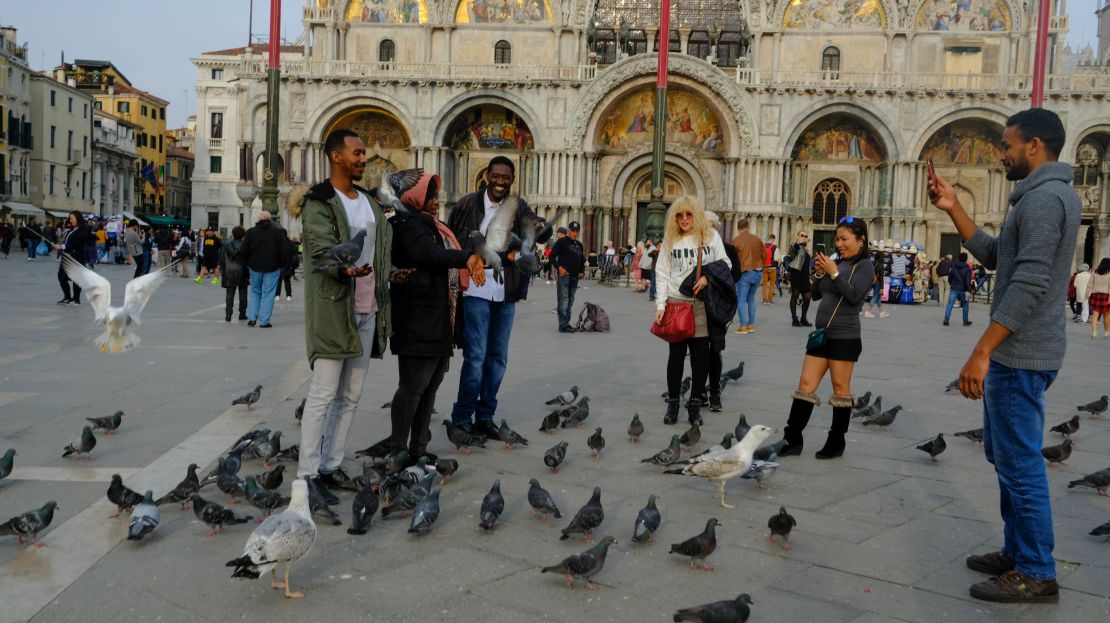
A fragile, amphibious society
Tourists have been visiting Venice since the early 18th century and have always been a vital part of the cityscape. But how to keep that sustainable and intact for the future is a big question, says Luca Velo, a researcher at the University of Venice.
“The main issue today is the lack of general vision for the future of the city,” he tells CNN Travel. “We don’t actually know how much mass tourism will impact the future, for ourselves and for the extraordinary environment that we have here.”
But for years, local authorities argue they’ve been taking those steps.
In November 2017, Italy’s government announced a ban on cruise ships weighing over 100,000 tones from entering from Venice’s Grand Canal, instead diverting them to Marghera, a neighboring industrial area.
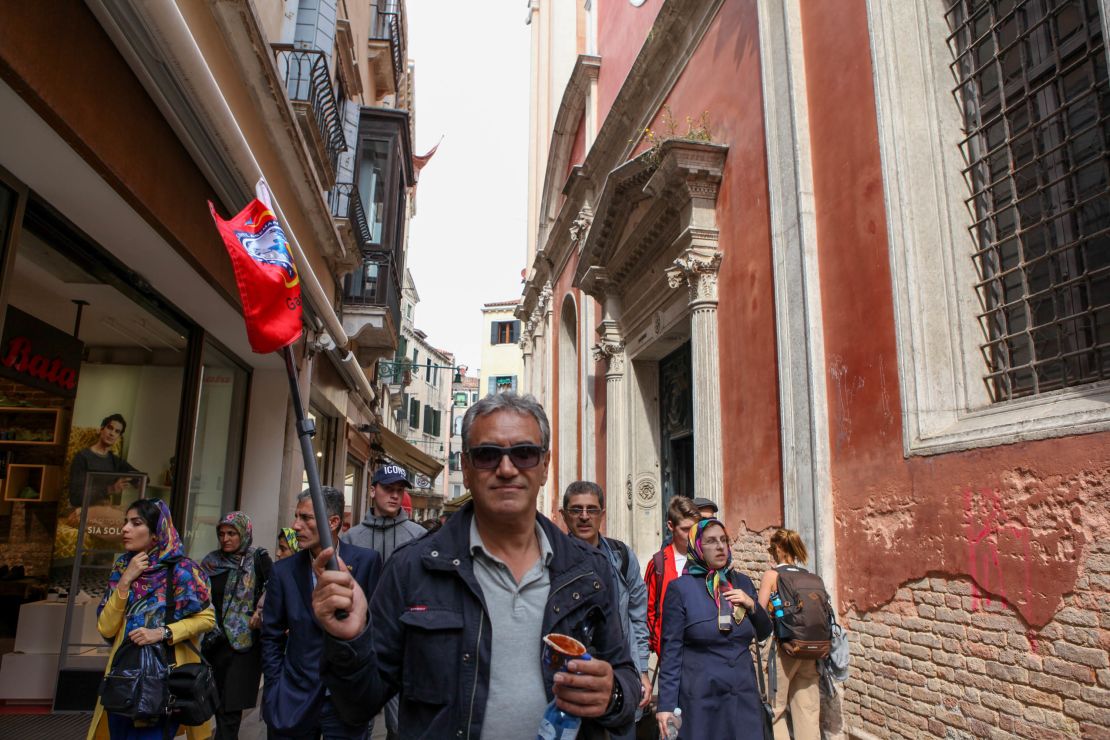
Last spring, city authorities brought in turnstiles designed to restrict the movement of visitors in some of the city’s most crowded arteries over a long holiday weekend.
And in the high season, English-speaking police-assistants, known as “decorum angels,” can be found patrolling some of the busiest areas in town, warning tourists who dare to dip their feet in the canals or who are caught eating or drinking in an undesignated area – that they could be facing a fine of up to €500 (about $585).
Now, Venice is planning to take its most controversial step yet.
In September, a new measure requiring day-trippers to pay an entrance fee into the city of up to $11 (€10) will come into effect. Tourists overnighting in Venice will be exempt as a city tax is already included in the hotel rate. Residents, some 30,000 commuters, students and children under six will also not be required to pay.
Simone Venturini, Venice’s deputy mayor and councilor for economic development, tells CNN Travel that the money will go towards costs such as waste and security management.
Day-trippers who benefit from city services without spending much inside the city itself will, he says, “at least leave a contribution that will allow the municipality to lessen costs that currently fall on the shoulders of the citizens.”
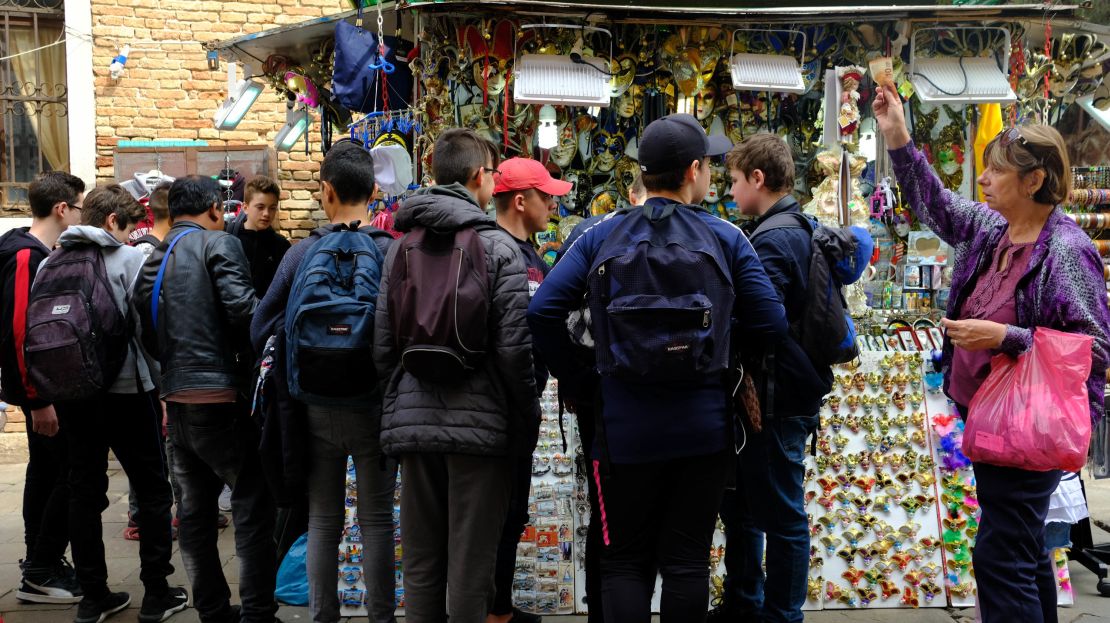
“We believe those who comes here should stay a few days and experience [the city] slowly, lose themselves in the canals of Venice and appreciate all the islands and places that are perhaps less famous to San Marco at the Rialto bridge,” Venturini says, adding that tourism “must be managed not [by] closing the gates and blocking the city, but by incentivizing quality tourism.”
While the authorities believe the fee will help make the city more sustainable for tourists and locals alike, others say it’s an undemocratic, exclusionary system that also draws parallels to an amusement park.
Across Europe, cities are struggling to tackle overtourism.
In Belgium, Bruges is cutting advertising for day trips and reducing the number of cruise ships allowed to dock at Zeebrugge port.
Amsterdam’s soaring visitor numbers reached 18 million in 2018, prompting the Netherlands tourism board to halt advertising campaigns, stating that its focus is now on “destination management” rather than “destination promotion.”
‘What time does Venice close?’
Marco Gasparinetti, an environmental lawyer and spokesperson for Venice’s largest activist group Gruppo 25 Aprile, told CNN Travel that American tourists sometimes ask him when Venice closes.
Gasparinetti believes that the proposed access fee skirts Venice’s real problem with overcrowding and won’t deter tourists. His group, whose primary campaign is to preserve the number of residents in the city so that it doesn’t turn into a “kind of theme park,” is calling for a quota instead.
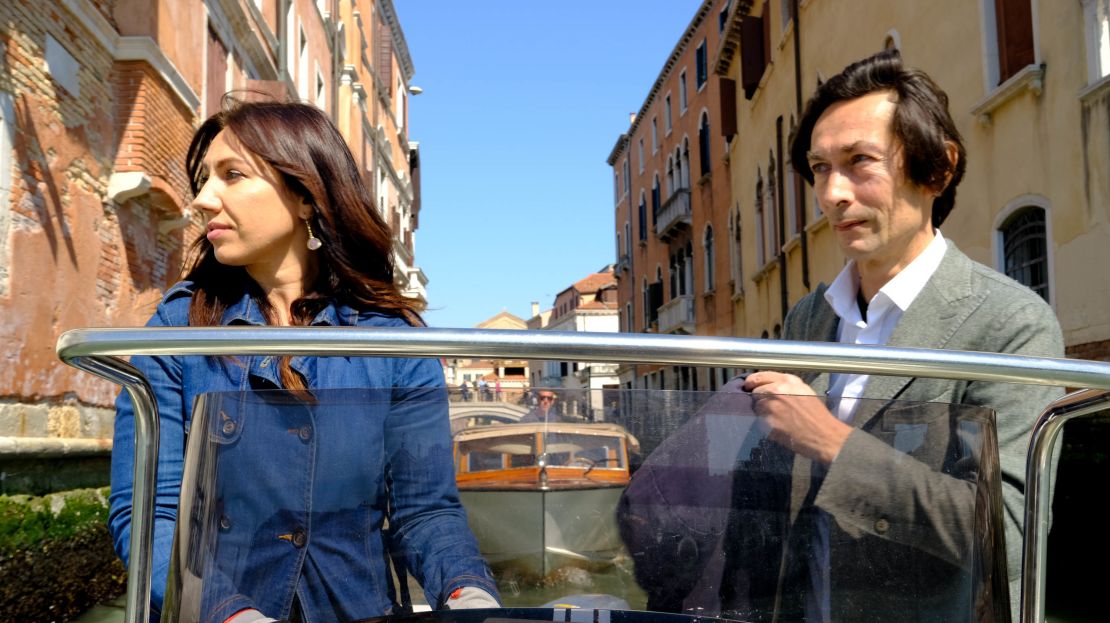
For Venice to be enjoyed by tourists, the city also needs to exist as a place for everyday life, he says.
Fifty years ago, approximately 150,000 people lived in the city. Now, only some 53,000 residents are left.
Between an aging population and a highly educated young population looking for work opportunities outside of the tourism sector, Venice sees a net loss of around 1,000 inhabitants a year.
“We need to create conditions for people to stay,” he says, adding that there are no jobs for young graduates, “unless you want to waitress or work selling tourist stuff at a kiosk.”
Although the city attracts new residents each year, they tend to be extremely wealthy, Gasparinetti notes, saying that the city is losing its middle class.
Meanwhile, many Venetians who leave end up renting out their apartments on Airbnb, which some say encourages more tourists than the city is equipped to handle.
Artist Deirdre Kelly, who has lived in the city for 15 years, believes that instead of focusing on a tourist tax, the Venice authority should try to manage Airbnb and other rental schemes.
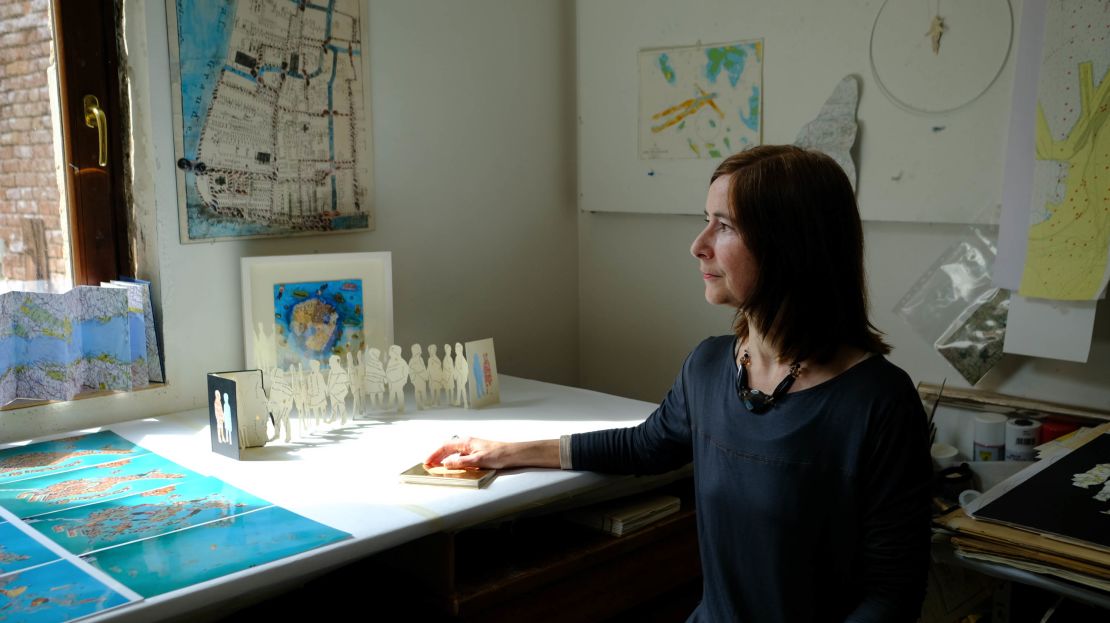
“It brings tears to my eyes to see these articles that show whereall the red dots are,” she says, referring to the Airbnb’s search function which shows prospective travelers available rental options.
“It actually looks like Venice is bleeding to death.”
A golden pot
Tourism – and tourism sector jobs – are the staple of life for many inhabitants. Venice’s Port Authority President Pino Musolino says that while the cruise ships might bring in plenty of foot traffic to the city, they also help to create up to 6,000 jobs for the locality.
“30 million plus tourists per year is a golden pot and a very easy one,” Musolino tells CNN Travel.
“It’s all gain and no losses,” he says.

Still, Musolino believes that its time to start thinking about creating jobs outside of the tourism sector, agreeing that limiting the amount of travelers at certain times of the year would help.
“[It’s] not because we want to close city or put up gates,” Musolino says, but to challenge the idea that Venice is just an “open-air museum.”
“I don’t think anybody would be happy to live in a city that is just a beautifully wrapped box with nothing inside.”



















